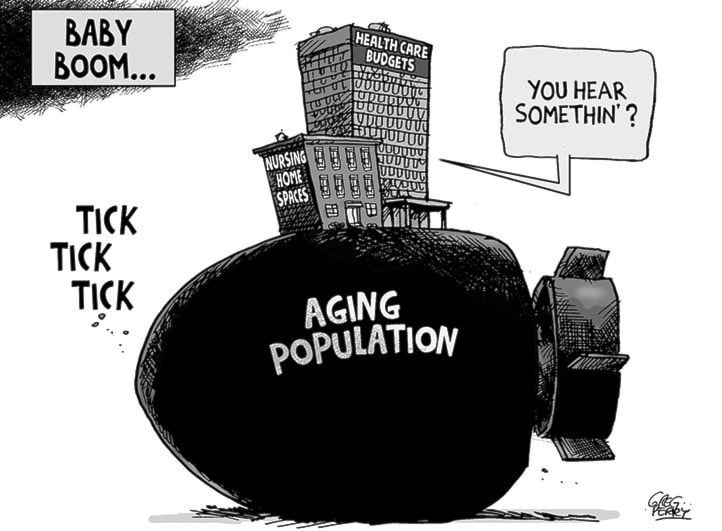Statistics Canada (Statscan) has released a new tranche of information from the 2016 census, and it shows that for the first time since Confederation in 1871, the number of people aged 65 and older in Canada (16.9 per cent of the population) is greater than the number of people in the youngest age group, those aged between 0 and 14 (16.6 per cent).
In British Columbia, 18.3 per cent of the population is 65 or older, compared with 14.9 per cent who are 14 or younger. The contrast is even starker in small communities in this region.
In Ashcroft, 35.7 per cent of residents are 65 or older, with 12.4 per cent of residents under age 14. In Cache Creek the numbers are 28.5 per cent (65 and older) and 12.4 per cent (14 and younger), while in Clinton 29.8 per cent of residents are 65 or older, with only 10.7 per cent aged 14 or younger.
In all three communities, the number of residents in the 65 and older category increased in 2016compared with the 2011 census numbers, while the number of residents aged 14 and younger decreased.
The median age of British Columbians is 42.3 years. In Ashcroft it is 52; in Cache Creek it is 49.5; and in Clinton it is 50.8.
2011 was the first year in which seniors outnumbered children in B.C., but at the time the gap was just over 11,000. In 2016, seniors outnumbered children by just over 150,000 province-wide. According to Statistics Canada, the sharp increase in seniors correlates with baby boomers (those born between 1946 and 1965) hitting retirement age, while the slow growth in children is due to fertility rates, which have been slowing since the 1970s.
While immigration has aided general population growth in B.C., the statistics agency says most immigrants fit into the 15-64 years age category, and thus affect neither children nor seniors.
The aging of Canada’s population recorded in the 2016 census is only the tip of the iceberg. The last cohort of baby boomers will not enter the 65 and older category until the late 2020s, so their impact will not be recorded until the 2031 census. By then, almost one in four Canadians could be 65 or older, while the number of those aged 14 or younger is expected to be at about 2016 levels, widening the gap. This will have profound implications for areas such as health care, the labour market, pension plans, social services, and housing needs.
In its recent “Key results from the 2016 census” report, Statscan says that “More Canadians are receiving an old age pension and are seeking more health care and services. Meanwhile, proportionately fewer people are working and paying income tax. Housing and transportation needs are changing, as is consumption, which is shifting towards goods and services for seniors. The number of families made up of couples whose children have left home is also on the rise.”
British Columbia has the second-oldest population in the country, after the Maritimes. Seven of the top 10 municipalities in Canada with the largest share of people over the age of 85 are in B.C., with four of those on Vancouver Island. Statscan notes that the region is “well-known for attracting many seniors, partly because of its climate.”
Stascan also says that “For many years, British Columbia has had the highest life expectancy among the provinces and territories, as well as lower fertility.”
Longer lifespans have played a role in increasing the percentage of seniors in B.C. Since women tend on average to live longer than men, this has also raised the ratio of women to men. In 2016, women made up 51 per cent of the province’s population, marginally above the Canadian average of 50.9 per cent. Ashcroft hews close to this figure, with women making up 51.1 per cent of the population. In Cache Creek, 49.7 per cent of the population is female, and in Clinton women make up 49.6 per cent of residents.
